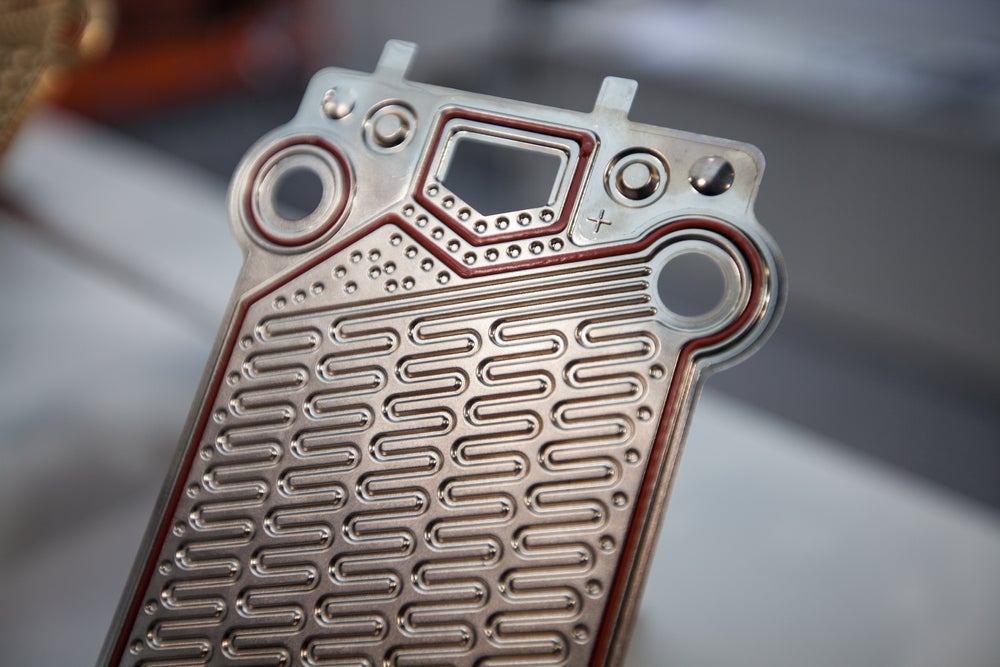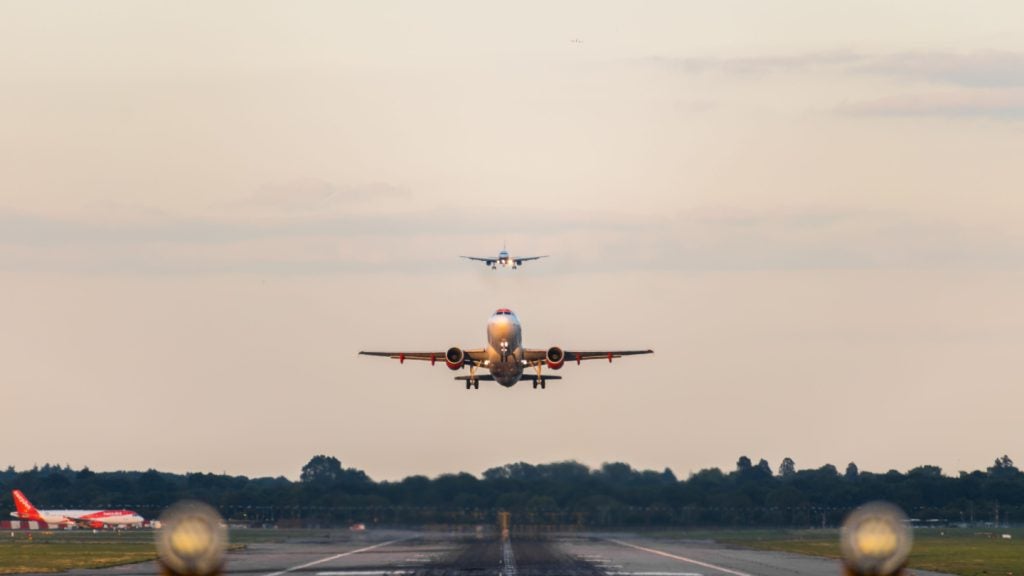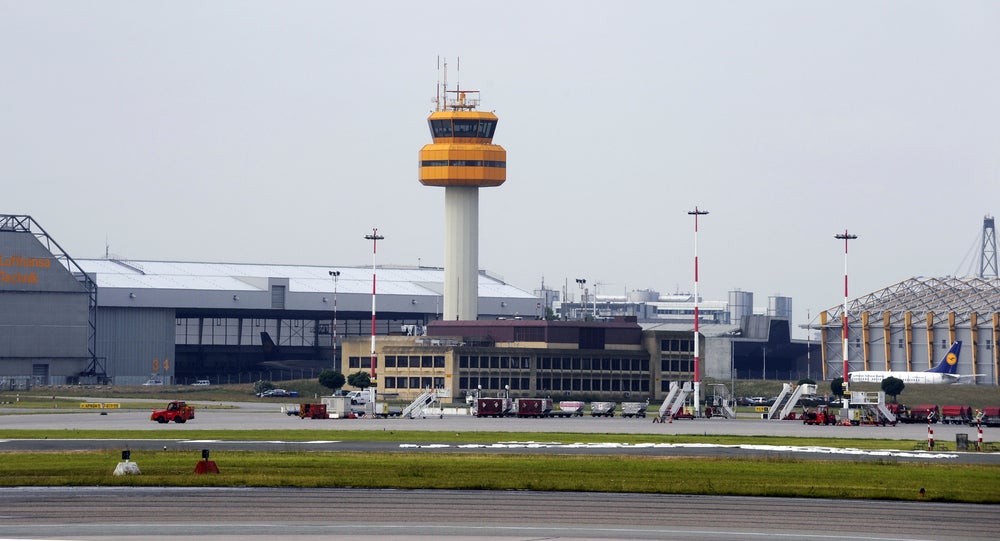Security, which is among the top priorities in terms of the service standards that passengers expect from Paris airports, represents a challenge to the excellence written into Aéroports de Paris’s mission statement.
This is why, over and above simple compliance with the standards set by the state, ADP is committed to ensuring the ongoing improvement of its airport systems.
Following the dramatic events of 9/11, the air transport industry is experiencing one of the most serious crises in its history. In the years since the devastating attack, massive efforts have been made to deploy additional human and technical resources to speed up the rate of improvement in security at Paris airports.
During this time, staff numbers dedicated to security have doubled (to 4,200) and ADP has invested to the tune of €230m annually during the financial period 2001–04.
The first phase of introducing new facilities is now complete, and ADP’s efforts are now firmly focused on improving the quality of these measures, building on the professionalism of its employees, rationalising the means deployed and honing new techniques.
See Also:
While these measures are obviously focused on achieving tight security, they are also aimed at making improvements in customer service standards. Quality is achieved in the way passengers are dealt with and by maintaining levels of comfort and efficiency.
How well do you really know your competitors?
Access the most comprehensive Company Profiles on the market, powered by GlobalData. Save hours of research. Gain competitive edge.

Thank you!
Your download email will arrive shortly
Not ready to buy yet? Download a free sample
We are confident about the unique quality of our Company Profiles. However, we want you to make the most beneficial decision for your business, so we offer a free sample that you can download by submitting the below form
By GlobalDataThe first results of the new initiatives have now been obtained. Waiting times have been greatly reduced after summer 2003, due to the development of new resources, both material and human.
Today, ADP has achieved waiting times comparable to those before 9/11.
In 2003, 6% of complaints were about the new control procedures (compared with 13% in 2002). Over the same period, the reasons behind claims specifically involving inspection-filter checkpoints fell from 409 to 267 (down 35%) for 35 million passengers departing from Paris.
The control measures taken by ADP have a double objective: that of providing quality security services and quality customer services. They translate into three major axes:
1. A customer service-oriented organisation
- Drawing up of a quality assurance programme
- Creation of a security division
- Creation of a department for internal appraisal
- Permanent surveillance of airport premises
- Making improved customer service the responsibility of service providers
2. Reinforced training and more information
- Improved quality and customer training
- Training for architects and engineers
- Creation of a new security / training partner
- Diffusion of information and of a security culture
- Improved passenger information
3. New developments
- Video surveillance
- Detectors for traces of explosives
- Reinforcement of checks at road access points
- New structures to simplify and facilitate passenger movement
- Deployment of a system for the reconciliation and traceability of luggage
- Special services for people with reduced mobility
- A customer service-oriented organisation
In accordance with regulations, ADP has introduced a security quality assurance programme based on traceability, key indicators and reliable procedures.
INDEPENDENT AUDIT
In 2002, ADP decided to create a security division reporting to the General Directorate. This team, which is independent of the company’s operating divisions, draws up ADP’s security policy, and helps set standards and promote the security culture within the company.
It also ensures good relationships and coordination between public services and airport divisions, and evaluates the system for implementing security measures.
ADP has set up an appraisal service within its security division, a structure that is unique in Europe today. This service organises internal audits and prepares external audits in an effort to anticipate anomalies in its security procedures. All of these actions will contribute to improving the quality of security ADP customers are entitled to expect.
TAKING RESPONSIBILITY
Within the framework of its responsibilities, ADP must also closely monitor and ensure the correct use of its own resources, and exercise strict control over the work of its service providers and the state of its own installations.
This is why, in 2003, an operational post was created in each ADP terminal for security activities known as PEXAS. The holders of these posts, who are responsible for the operational implementation of security measures, are on permanent watch, take quick decisions and see that the specifications imposed on outside contractors are complied with.
From the start of 2003, on the initiative of the new security division, thoughts turned to contract specifications for the checking of passengers and hold baggage, in order to take regulatory changes into account and to ensure the ongoing improvement of ADP services.
These contracts integrate the state requirement to train service providers’ employees in terms of security. The number of training hours, which purposely exceeds the strict number of hours laid down by the law, will also lead to an improvement in the professional approach of agents in their relations with the customer.
TRAINING PROGRAMME
The security division’s training centre identifies and defines the security training needs of ADP’s staff. In 2004, ADP provided a total of 17,448 hours of training for 3,227 agents. Security training is always focused on quality customer service. As the cornerstone, in terms of quality, of ADP’s services, the training centre has developed:
- A relationship emphasis (with passengers and partners, for example) within existing training
- The notion of facilitation to simplify passenger itineraries as well as partner workloads
- New training for managerial staff with responsibilities in security management, the awarding of sub-contracts and quality management
One further aim of ADP’s security division is to establish a security culture within the organisation.
On each platform, the network of security officers is run by a delegate from the security division who is constantly present at the airport. These delegates have an advisory role and serve as a point of reference for operational managers and ADP’s various partners.
PASSENGER INFORMATION
Information for passengers preparing to travel is now an important prerequisite to ensure that waiting time is spent peacefully and without incident.
ADP has therefore provided an information booklet for passengers to keep them informed on the checks they may have to face, the precautions to be taken and the security and safety measures to be respected.
These measures help passenger avoid carrying objects considered dangerous and having them confiscated at the inspection filter checkpoint, where they will be sent to be destroyed. ADP is also seeking solutions to avoid this situation by providing passengers with the facility to post the prohibited item to an address of their choice.
CHECKPOINT CHALLENGE
Passenger and baggage screening measures have been stepped up dramatically since 9/11, resulting in a worsening of passenger flows at security checkpoints. This has led ADP to re-examine its reorganisation while improving the quality of its service (waiting time, comfort and so on).
To improve the situation for passengers, agents are deployed, notably at busy times, just upstream from the checkpoint to provide information and prepare passengers for the checkpoint. The areas dedicated to checkpoints have more or less doubled in size.
In 2004, ADP set up a biometric control system to increase the reliability of access pass control for staff entering restricted areas.
This device is the first to be used in Europe on such a wide scale – involving 90,000 employees at Charles de Gaulle and Orly. The technology used relies on fingerprint recognition, the leading technology on the market in terms of reliability and performance.
Automation of the checking procedure halves the time taken to manually inspect documents, as the validation of the identity badge and the authentication of its owner are carried out in less than four seconds.
This speeding-up of procedures will greatly optimise the work of security agents, and improve airport staff efficiency and passenger flows at inspection filter checkpoints. The system is easy for staff to use, as it is no longer necessary to show one’s national ID card, and the checking process is much faster.
DEVELOPMENT PLANS
ADP intends to develop equipment using video surveillance techniques over three years at all its Paris airports. Some 1,800 cameras are already in place to monitor the perimeters of restricted areas and certain technical equipment. In 2007, there will be around 4,000 cameras, representing an investment of €40m.
This state-of-the-art equipment will enable compliance with regulations in terms of security and public safety. Specifically, it will:
- Reinforce effective security
- Prevent criminal acts
- Improve reaction time to any security incident
- Provide peace of mind for passengers, attendants and staff
- Facilitate public services
Priority has also been given to two particular objectives:
- Video surveillance of the inspection filter checkpoints: all checkpoints will be equipped by the end of the year
- Video surveillance for making the transport of bullion safe within the airports: 200 cameras should be installed by the end of the year
Other projects are being studied and may be launched to reinforce checks over all restricted areas, to fight against theft and to ensure the safety of goods and individuals.
To combat vehicle theft, ADP is testing innovative video
surveillance technology in three of its car parks, which will link entrance ticket, registration and vehicle information.
EXPLOSIVES DETECTION
ADP has acquired 20 machines for the detection of traces of explosives using ion spectrometry, which can be used on passenger clothing and cabin baggage, and 51 additional machines are being acquired.
This mobile equipment, placed at the filter inspection checkpoints, allows for minute (nanoscopic) traces of explosives to be detected on people and their baggage using a sampling process that provides a result in less than ten seconds. The security agent collects the sample using a swab.
These detectors are currently used by security agents checking hand luggage. They are a vital element in the process and allow ADP to improve control of people with reduced mobility, in full compliance with regulations.
ACCESS CONTROL
ADP is reinforcing staff control along airport access roads and has been installing adapted checkpoints (known as PARIF) since 2003. These new structures allow for improved security, with staff control at these points matching the level applied to passengers, while allowing the necessary flows for sound airport operations. The PARIF control points comprise:
- Three lanes allowing for the simultaneous checking of three vehicles and their goods in individual enclosed spaces
- Premises for the checking of people transported and pedestrians, using all the standard equipment of the checkpoints (x-ray screening, searches and biometry)
- Premises where all access and video surveillance control are centralised
- Premises for customs
- Premises reserved for the subcontractors carrying out the checks
The first PARIF checkpoint is already operating at CDG; another went into service at Orly at the end of 2004. All the checkpoints at Orly and CDG will be equipped by 2007.
The separation of flows between public areas (area with free access) and restricted areas (after the checkpoint) essentially corresponds to the separation between passengers on departure and on arrival.
In some terminals, an old building design does not allow for such a separation without the presence of security officers to ensure that people do not cross in the opposite direction or join a controlled flow of passengers.
One of the solutions studied to ensure the separation of flows is a crossover revolving door. This innovation shows that it is possible to combine passenger comfort with improved security measures, as the revolving door facilitates the circulation of passengers and improves the sealing capacity of different areas.
ADP is offering airlines the chance to use a computerised ‘reconciliation’ service. With this process, no baggage can be loaded onto a plane without its owner being on board. ADP has included in the system’s functions the traceability of baggage as it travels through the airport, to avoid losses during the transfer of baggage from one terminal to another.
This tool, which is currently in use at CDG, provides highly reliable performance in terms of baggage reconciliation, a key goal in airport operations, and leads to an overall improvement in security. By limiting losses or switching errors, and facilitating searches in the event of a missed boarding, passenger service is considerably improved.
SPECIAL ARRANGEMENTS
In 2003, ADP signed the National Accessibility Charter, demonstrating its wish to improve the quality of access for persons with reduced mobility through staff training and improved access to its airports.
To improve the quality of its customer services, ADP will shortly be introducing a new procedure that takes greater account of the constraints on persons with reduced mobility, but which does not alter the obligation to check passengers.
With this procedure, passengers may keep their personal wheelchair up to boarding and, if their condition allows, they will be placed in a nonmagnetic wheelchair (without any parts that would set off the metal detector) to pass through the walk-through metal detector and undergo the checks applicable to everyone.
At the same time, their own wheelchair will be inspected, to be recovered on the other side of the walk-through metal detector. If the person cannot be transferred to the non-magnetic wheelchair, they will be ‘controlled’ seated in their own wheelchair. ADP will rely on the use of detectors for traces of explosives.
Now validated in principle by the state authorities, this procedure will be put in place gradually following delivery of the necessary equipment.






